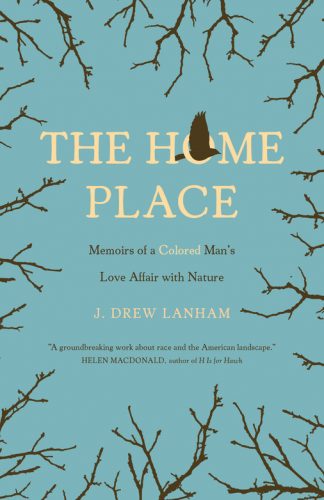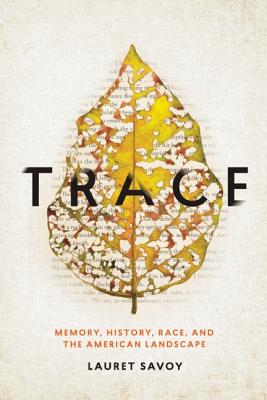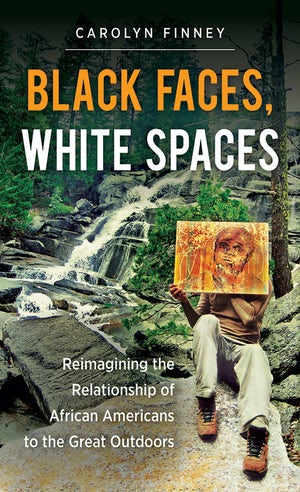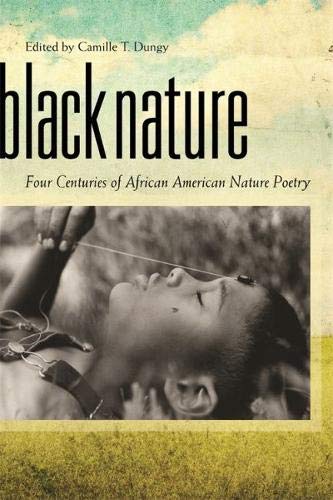I believe the best way to begin reconnecting humanity’s heart, mind, and soul to nature is for us to share our individual stories.
Like many other white Americans, after the murder of George Floyd, I felt the immediate need to do something, anything to better understand and ultimately dismantle systemic racism. Many amazing books, documentaries, and podcasts have already been recommended across social media and if you Google “books to learn about racism and discrimination” you will get recommendations from everyone from Amazon to NPR to Harvard. If you haven’t done this, I suggest you give it a go! And then, take some time with these resources!
After finishing a few of these recommendations including classics by James Baldwin and Malcolm X who were disappointingly left out of my high school curriculum, I felt the pull to read more about the history and experience of Black Americans in one of the places where I spend the most time – the great outdoors!
This deep dive was 100% inspired by the work of Corina Newsome and the other organizers of #BlackBirdersWeek which took place virtually May 31-June 5, 2020. The week of events was sparked by the racist Central Park incident that went viral on May 27th. If you aren’t familiar with either of these topics, please pause here and read more via the links above.
#BlackBirdersWeek opened my eyes to challenges that Black outdoor-enthusiasts face and encouraged me to continue learning how I can hold myself and other white hikers accountable for making nature spaces safer.
Books have always been my best learning tools (and dare I say, friends?) so I changed my search terms and discovered some amazing Black authors. The following books are a portion of my summer reading list that I’d like to recommend to you!
The Home Place: Memoirs of a Colored Man’s Love Affair with Nature by J. Drew Lanham

This is one of those stories that when I turned the last page, I closed the book and gave it a tight squeeze. I really felt a connection with this author and his beautiful descriptions of landscapes and memories. I recommend this one to fans of fiction and nonfiction alike because while it is a memoir, it reads almost like a diary filled with histories beyond Lanham’s lifetime.
Drew Lanham is an ornithologist and professor of ecology at Clemson University who tells the history of his family in Edgefield, South Carolina and his complex emotions around finding joy in the same landscapes that his ancestors were tied to by forced labor. His descriptions of being “a rare bird” in a profoundly white field took the lessons I learned about my privilege in nature during #BlackBirdersWeek to a new level of understanding and growth. Go read this book! Or, at the very least listen to Lanham on the This is Love podcast, Episode 22: Prairie Warbler
My plumage is a kaleidoscopic rainbow of an eternal hope and the deepest blue of despair and darkness. All of these hues are me; I am, in the deepest sense, colored.
— J. Drew Lanham
Trace: Memory, History, Race, and the American Landscape by Lauret Savoy
 This book was the perfect next choice after finishing The Home Place as it continued to explore the connections that humans have to their landscapes while also introducing deeper histories from across the United States. In this book, the readers take a journey with Savoy from the far American West down to the Suwannee River, back up to Michigan and ending in Washington D.C. all while learning about Savoy’s family genealogy and how the histories of these places implicate us all.
This book was the perfect next choice after finishing The Home Place as it continued to explore the connections that humans have to their landscapes while also introducing deeper histories from across the United States. In this book, the readers take a journey with Savoy from the far American West down to the Suwannee River, back up to Michigan and ending in Washington D.C. all while learning about Savoy’s family genealogy and how the histories of these places implicate us all.
As a geologist and professor of environmental studies, Lauret Savoy has academic expertise of how landscapes form over time. In this book, she uncovers the layers both geologically and historically that shape how we know them today in a racial, cultural, and social context. I highly recommend this book for anyone looking to learn about the history of racism on the land in a way that feels more personal than the textbook approach.
The past and its landscapes lie close. They linger in eroded, scattered pieces, both becoming and passing into what I am, what I think we are. Perhaps the shadows of unnumbered years have touched me in choices made, in backward yearnings, in fears as well as dreams. Perhaps they form the natural and unnatural histories of my soul.
— Lauret Savoy
Black Faces, White Spaces: Reimagining the Relationship of African Americans to the Great Outdoors by Carolyn Finney

In contrast to the above personal narrative style of writing, Carolyn Finney’s Black Faces, White Spaces takes a more academic approach that took me back to my days of reading thought-provoking anthropological texts as an undergrad. Finney identifies as a scholar-activist who “set out to get a better understanding of the African American environmental relationship in the United States.” She does this by putting into historical context how slavery, segregation, the Civil Rights Act, and even the Wilderness Act, the National Parks Service, and the media have all had an impact on the relationship of African Americans to the great outdoors today.
I was surprised to find out in the preface that much of Finney’s research, surveys, and interviews actually take place in Florida (specifically Dade and Broward counties) and she uses Florida-based national parks in many examples throughout the book. I’m ashamed to say although I’m a Florida native, it wasn’t until Chapter 3 of this book that I learned the histories of American Beach and Virginia Key Beach in Jacksonville and Miami, respectively, two places I encourage you to research, especially if you’re a Floridian!
I highly recommend this book to anyone but especially those working towards an environmental cause, either through a professional, volunteer, or personal capacity. This book will open your mind to ways in which African Americans have been left out of outdoor narratives, conversations, and spaces in the past and how we must make changes for a better future.
When we consider landscapes like national parks, or other areas of ‘natural’ beauty, what you see is not always what you get. The places are overlaid with histories seen and unseen…
— Carolyn Finney
Black Nature: Four Centuries of African American Nature Poetry edited by Camille T. Dungy
 At the time of writing this recommendation, I’m only about a quarter of the way through the 350 pages of poetry this book offers, but I can say without a doubt this is a work of art. One of my personal goals this year was to gain a stronger appreciation and understanding of poetry. I loved reading and writing poems as a child but as I’ve grown up, I somehow lost that sense of wonder and I’m trying to get it back by taking this book in small doses.
At the time of writing this recommendation, I’m only about a quarter of the way through the 350 pages of poetry this book offers, but I can say without a doubt this is a work of art. One of my personal goals this year was to gain a stronger appreciation and understanding of poetry. I loved reading and writing poems as a child but as I’ve grown up, I somehow lost that sense of wonder and I’m trying to get it back by taking this book in small doses.
Black Nature is the first anthology to focus on nature writing by African American poets and includes 180 poems from 93 poets (you can see why it’s taking me awhile to get through). It offers perspectives from slavery, Reconstruction, the Harlem Renaissance, the Black Arts Movement, and the late 20th and early 21st century of African American poetic movements.
This book has expanded my understanding of what nature poetry can mean by including narratives that go beyond the expectation that nature is all about the wind in the trees or the songs of the birds. This collection reveals that the human connection with nature is as diverse as the flora and fauna within it.
Many of this collection’s poets remind us of the danger or futility of drawing too close a connection between our emotional landscapes and the realities and responses of the natural world, but others comfortably, sometimes aggressively, remind us how our place in the ecological web implicates the Black community and the human race at large in emotional, practical, and creative ways.
— Camille T. Dungy
Next up…
As I continue to learn about this topic here are more suggestions from my to-read list:
- Colors in Nature by Lauret Savoy
- The Adventure Gap: Changing the Face of the Outdoors by James Edward Mills
- Rooted in the Earth by Diane D. Glave
- Legacy on the Land: A Black Couple Discovers Our National Inheritance and Tells Why Every American Should Care by Audrey Peterman
This originally appeared in Wonder & Grow, a blog by Chelsea Collison, one of our former Museum educators.